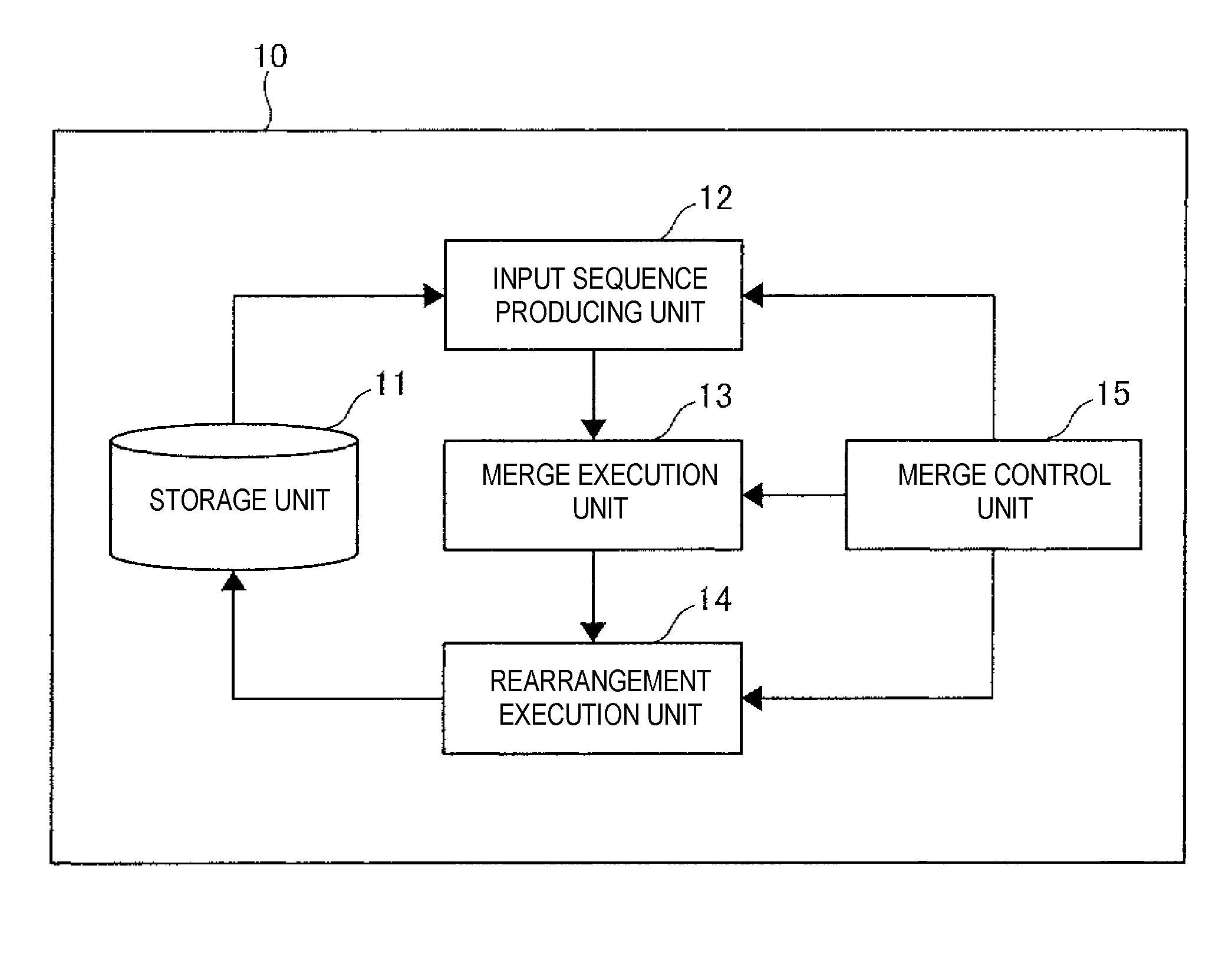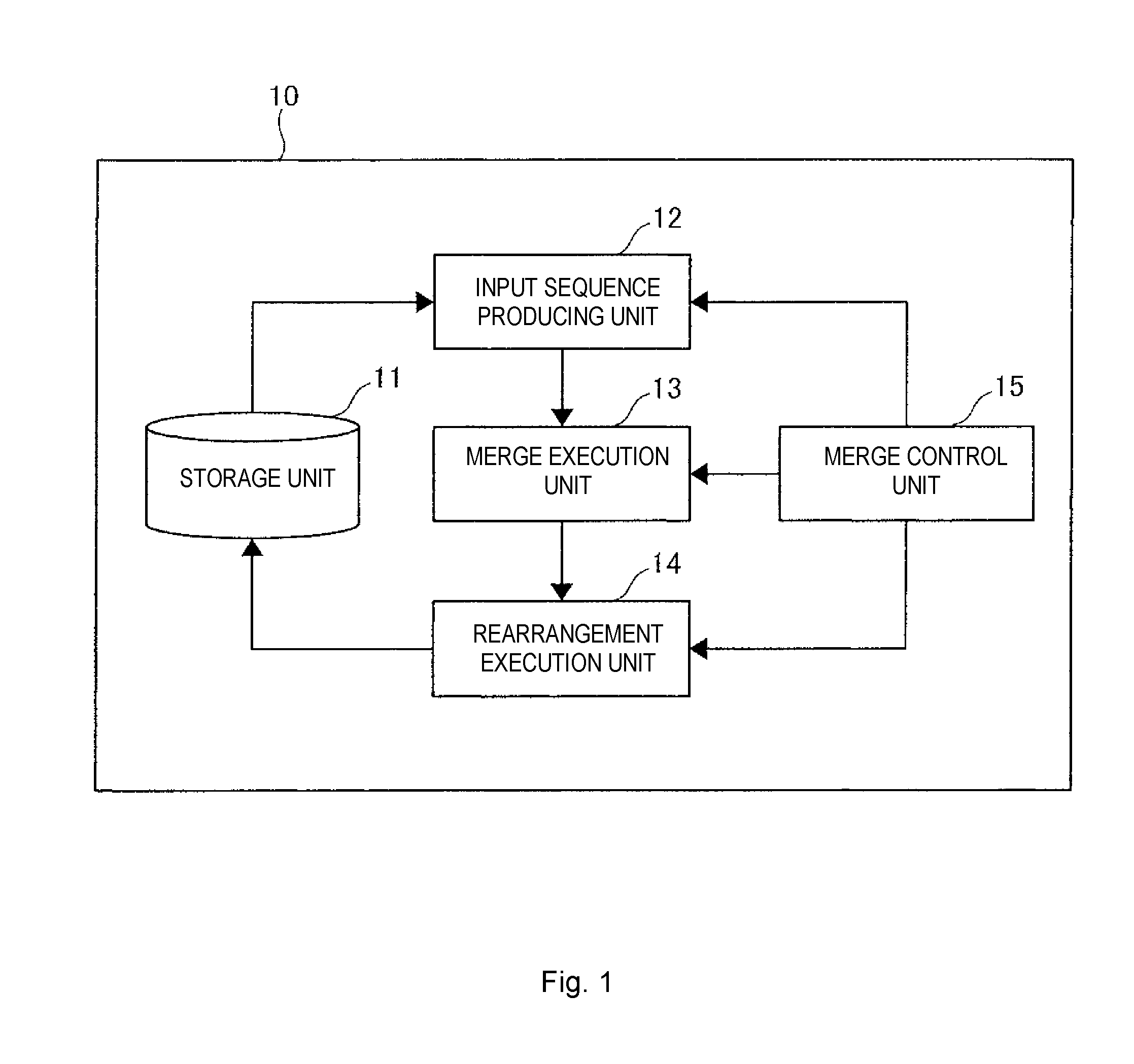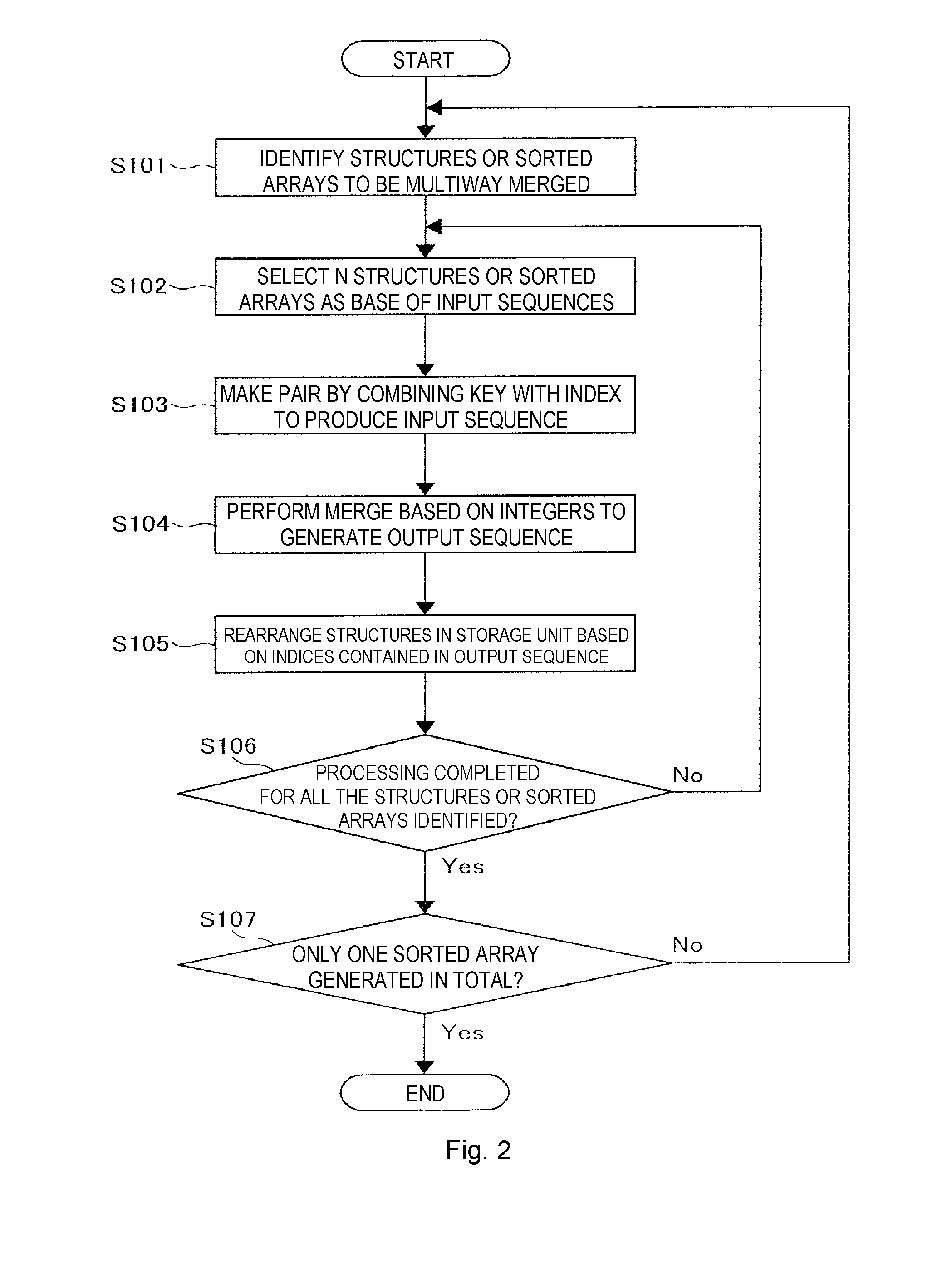Sorting an array consisting of a large number of elements
a technology of arrays and elements, applied in the field of arrays consisting of a large number of elements, can solve the problems of increasing processing time, large overhead associated with memory copy, and difficulty in adopting an accelerating technique employing single instruction multiple data (simd) instructions for processing multiple data with a single instruction, so as to reduce the processing load associated with the effect of accelerating
- Summary
- Abstract
- Description
- Claims
- Application Information
AI Technical Summary
Benefits of technology
Problems solved by technology
Method used
Image
Examples
Embodiment Construction
[0018]An embodiment of the present invention will now be described in detail with reference to the accompanying drawings. A merge sort processing apparatus 10 according to an embodiment performs merge sorting on an array consisting of a large number of elements (e.g., structures). In the process of merge sorting, the merge sort processing apparatus 10 performs multiway merge which merges N input sequences to generate a single output sequence, where one structure or one sorted array of structures makes an input sequence. However, the multiway merge is carried out by iteratively performing two-way merge, N being an integer equal to or greater than 3.
[0019]The embodiment described below uses structures as an example of the data to be sorted and carries out sorting by rearranging structures present in an array consisting of a large number of structures. In the embodiment, however, the data to be sorted is not limited to structures.
[0020]The functional configuration of the merge sort pro...
PUM
 Login to View More
Login to View More Abstract
Description
Claims
Application Information
 Login to View More
Login to View More - R&D
- Intellectual Property
- Life Sciences
- Materials
- Tech Scout
- Unparalleled Data Quality
- Higher Quality Content
- 60% Fewer Hallucinations
Browse by: Latest US Patents, China's latest patents, Technical Efficacy Thesaurus, Application Domain, Technology Topic, Popular Technical Reports.
© 2025 PatSnap. All rights reserved.Legal|Privacy policy|Modern Slavery Act Transparency Statement|Sitemap|About US| Contact US: help@patsnap.com



